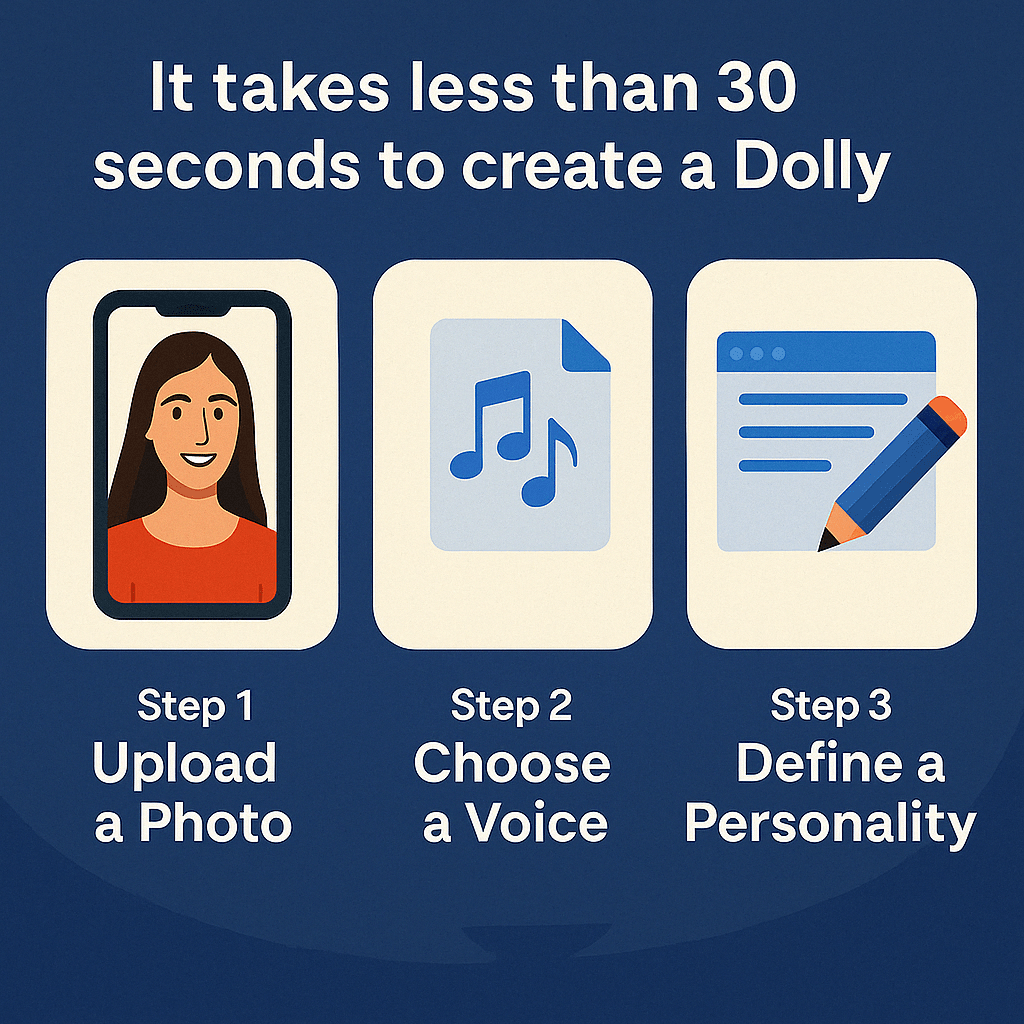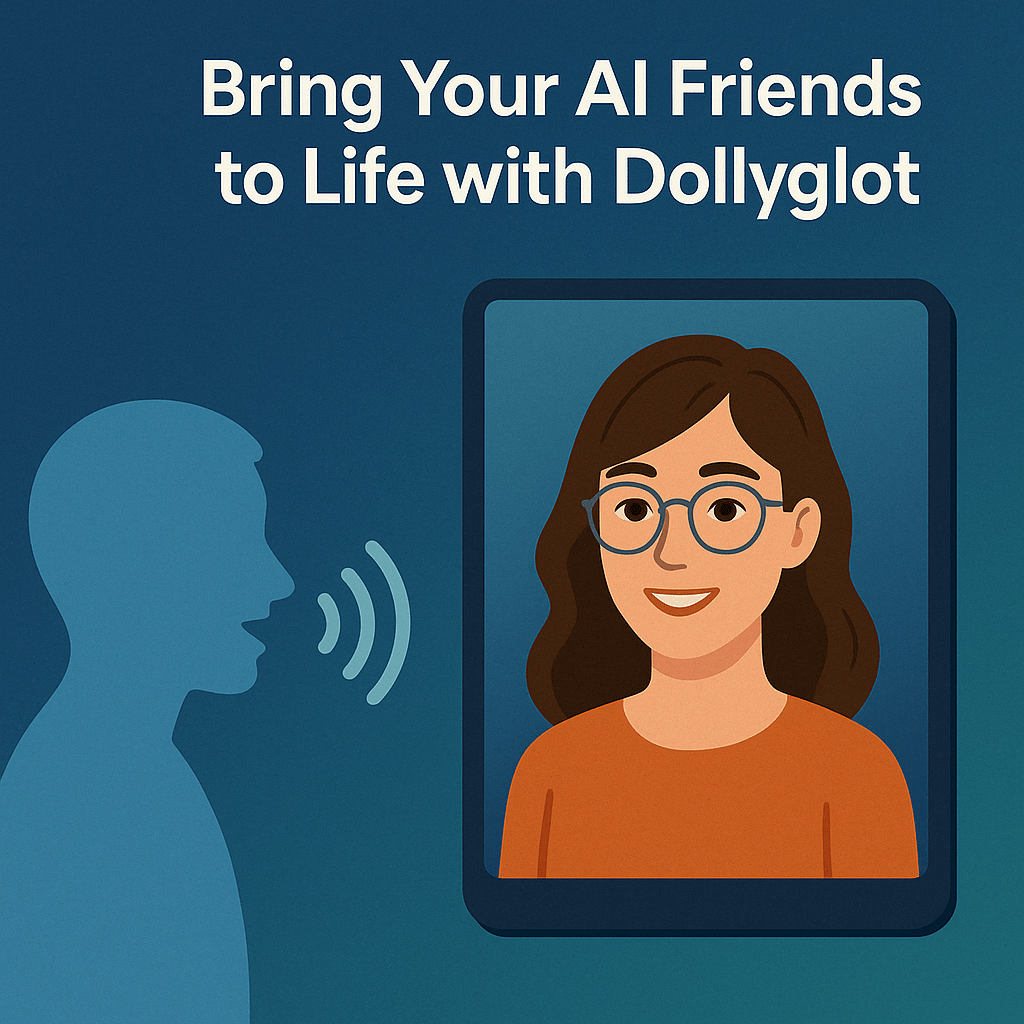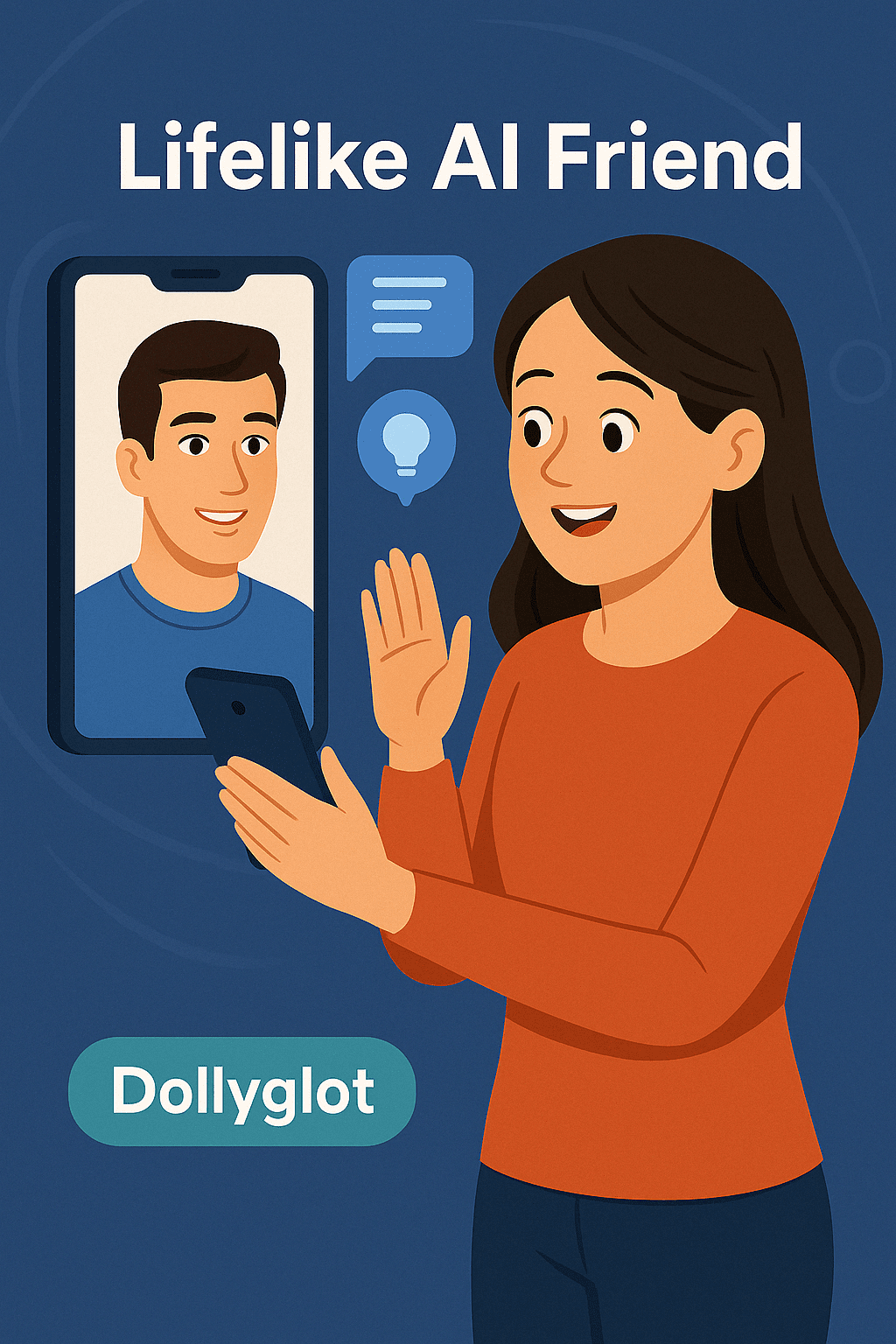Your Next Best Friend Might Be AI — Inside Dollyglot’s Vision
Dollyglot is a next-generation conversational AI startup based in San Francisco, launched in 2024 as part of Y Combinator’s W25 batch. At its core, Dollyglot takes the character-based AI experience popularized by platforms like Character.ai and adds a dramatic visual leap: real-time video avatars.
Instead of static profile pictures and typed-out text responses, Dollyglot lets users create fully interactive AI personas that look and sound human. With just a photo, a voice clip, and a few lines of text to define personality, users can bring to life an AI-powered companion capable of natural conversation and lifelike video expressions — all in real time.
The company is redefining the relationship between humans and AI with a bold premise: within five years, every member of Gen Alpha will have an AI best friend. Not a chatbot. A face. A voice. A presence. Dollyglot isn’t just technology; it’s companionship reimagined.
Who Are the Founders Behind Dollyglot?
Dollyglot was co-founded by Thomas Minassian and Paul-Henri Biojout, two technically brilliant minds who have lived and worked together for years. Their complementary backgrounds bring both mathematical rigor and creative energy to the table.
Thomas, formerly a quantitative analyst at Société Générale, holds a master’s degree in Applied Mathematics and Business from HEC Paris and University of Paris 7. His expertise in modeling and systems design forms the backbone of Dollyglot’s video avatar engine.
Paul-Henri, a builder at heart, previously developed the Yumi Dialogue Engine — a tool used to create AI-driven “clones” for online creators. His work scaled to over 1,000 paying users before he left CentraleSupélec, one of France’s top engineering schools, to co-found Dollyglot full-time.
Together, the duo has already made a notable contribution to the open-source AI world by creating Parler-TTS Mini Multilingual, the first fully open-source multilingual text-to-speech model. It has attracted over 5,000 downloads in just one month, fueling dozens of fine-tuned derivative projects.
How Does Dollyglot Work?
The Dollyglot experience is built around three simple steps:
1. Upload a Photo
Users can choose any image — whether it's of a fictional character, historical figure, or even a loved one. This photo becomes the face of the AI, transformed into a real-time video avatar capable of blinking, smiling, and talking back.
2. Choose a Voice
Users can upload a voice sample or select from a curated voice library. The voice adds emotional texture and realism, matching facial expressions to tonal cues in real-time.
3. Define a Personality
With just a short written prompt, users instruct Dollyglot on how the AI should think and behave. Is your Dolly a curious journalist, a comforting best friend, or a hilarious prankster? The personality prompt guides how the AI responds — both in words and demeanor.
Once set up, the avatar becomes fully interactive, responding in video format with lip-syncing, eye contact, and dynamic facial movements. Dollyglot avatars aren’t passive figures — they feel alive.

What Sets Dollyglot Apart from Other Conversational AIs?
Dollyglot’s true innovation lies in its photo-to-video generation pipeline, which enables real-time facial animations without the need for pre-recorded clips. This is an unprecedented leap in consumer AI. While other tools can generate audio or animated GIFs from a photo, Dollyglot avatars converse with you live — complete with blinking eyes, head tilts, and subtle facial cues that reflect tone and intent.
The platform also integrates with leading reasoning models like DeepSeek R1 and Grok, allowing Dollyglot avatars to engage in complex, coherent conversation rather than regurgitate simplistic, pre-programmed lines.
Most importantly, Dollyglot positions itself against what it calls "lobotomized characters" — a growing frustration among users of mainstream AI bots that feel increasingly filtered, emotionless, or limited in personality. Dollyglot’s avatars are meant to feel vibrant, unfiltered, and context-aware — a genuine alternative to bland, over-censored interactions.
Why Does Gen Alpha Need AI Friends?
Dollyglot’s vision is rooted in a cultural and generational shift. As Gen Alpha (those born after 2010) grows up in a hyper-connected world, their social experiences are increasingly shaped by digital interaction. But online spaces often come with judgment, pressure, and performance anxiety.
AI friends, on the other hand, offer a judgment-free zone. They’re empathetic, patient, and infinitely customizable. Dollyglot believes these AI companions can become essential emotional support tools, particularly for young people struggling with loneliness, neurodivergent conditions, or social anxiety.
Beyond companionship, Dollyglot envisions avatars that can help kids with homework, support language learning, and even assist with emotional regulation — all in a format that’s engaging and familiar.
What Are the Ethical Considerations?
Creating lifelike AI companions isn’t without controversy. There are obvious questions around consent (especially when avatars are based on real people), data privacy, and the psychological effects of AI friendships.
Dollyglot’s response is transparency and user empowerment. Users are clearly informed of what data is used and how. All avatars are created with user-supplied materials, and the system discourages impersonation or harm.
Moreover, Dollyglot’s founders are committed to building safeguards that ensure AI remains a positive force — a companion that nurtures creativity, connection, and curiosity, rather than replacing human relationships.
What Has Dollyglot Achieved So Far?
Since its inception, Dollyglot has already garnered attention in both developer and creator communities. Their open-source contributions to multilingual speech synthesis show a strong foundation in technical excellence.
Their early traction — over 5,000 downloads of their multilingual TTS model and rising interest in their beta avatar system — points to growing demand. The team is now working to scale their backend systems to handle real-time interactions at a global level, while preparing new features like multi-character interactions and emotion customization.
What’s Next for Dollyglot?
Looking forward, Dollyglot aims to expand the personalization toolkit. Future updates may include:
- Emotional Intelligence Modeling: letting avatars detect user moods and respond with empathy.
- Memory and Continuity: enabling long-term relationships with avatars that evolve over time.
- Group Interactions: supporting multi-character scenes or even entire cast simulations.
Eventually, Dollyglot could extend its platform to classrooms, therapy tools, creative writing partners, or brand ambassadors — making real-time AI avatars a standard part of digital life.

How Is Dollyglot Shaping the Future of AI Companionship?
Dollyglot is more than an AI tool — it’s an experiment in emotional technology. By turning static photos into expressive, dynamic video characters, the startup invites users to build relationships that feel strangely real — but always under their control.
In a world where digital interaction often feels cold or transactional, Dollyglot offers something warmer. Something that smiles when you smile. Nods when you speak. Listens, responds, and remembers.
This is AI with a face. And perhaps, for the next generation, that’s exactly what they need.

